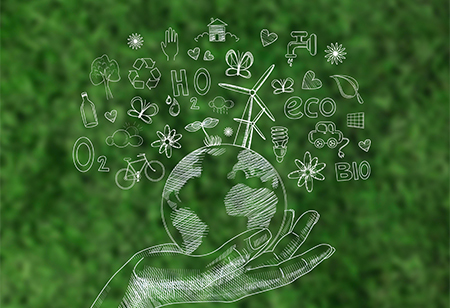
India is currently in a position to utilize the waste generated throughout the country to produce 65 GW of electricity per annum which has the potential to grow to 165 GW by 2030 and 436 GW by 2050, according to many industry experts. India generates 65 million tonnes of waste every year, which is estimated to reach 165 million tonnes by 2030 and 436 million tonnes by 2050 according to a white paper prepared at a two-day workshop of waste management experts that was held recently. Over the last decade waste-to-energy (WTE) solutions have gained considerable popularity globally for upholding environmental sustainability. The solutions have not only been substantially successful in waste management but also have contributed to the rising energy requirements of the modern world.
“A fundamental aspect of the circular economy is waste prevention. By designing products focusing on durability, repairability, and recyclability, resources can be optimized for use at source. Increased operational efficiency in manufacturing practices and extended product lifecycles can reduce the burden on landfills and incinerators, contributing to a cleaner future. Furthermore, individuals also bear a significant responsibility in encouraging sustainable consumption patterns. By making informed choices about the products they purchase, how they use and maintain them, and how they dispose of them, individuals can actively contribute to waste reduction”, mentioned Rajesh Ayapilla, Director-CSR and Sustainability for Coca-Cola India and Southwest Asia.
To understand in what ways sustainable solutions are bringing about a revolutionary change in the WTE market, one needs to consider the various issues that they are solving for the modern world.
Rendering of food and animal waste has proved to be beneficial in saving large volumes of landfill spaces. A report published by the Environmental Protection Agency clearly states that food waste takes up more space in landfill sites compared to any other waste material. This is exactly why rendering has emerged as one of the powerful remedies for sustainable waste management. Furthermore, rendering also prohibits greenhouse gasses from causing environmental pollution.
To give an example, Ericsson is in the process of reducing waste in landfill sites with the help of its end-to-end solution that digitally connects to the organization’s reverse supply chain, Ericsson Connected Recycling (ECR). Physical waste digitalization is carried out on this platform that promotes circularity, reduction of carbon emission, and preservation of raw materials.
“Our approach empowers FMCG retailers to achieve three critical areas: comply with regulations, generate new revenue streams, and strive to reach zero waste. Initial pilots have demonstrated a remarkable 40% reduction in waste volumes for a major retailer and the inclusion of three materials into circular material flows”, states Sophia Fahlsen, Head of IU Ericsson Connected Recycling.
There are several ways through which sustainable steps can be taken to reduce greenhouse gas emissions and make society a better place to live. The usage of solar power is worth mentioning in this regard. Globally, the usage of electricity is one of the primary reasons for greenhouse gas emissions, and currently, people are aware of this fact and taking steps like replacing incandescent bulbs with LED bulbs, using insulation wires, and others to reduce emissions.
Tetra Pak, a globally renowned food packaging company that provides convenient and sustainable solutions for the distribution and storage of products will recently start using a scalable solar thermal module. It can be easily integrated with currents and ultra-high temperature processing (UHT) lines and is generally used for the sterilization of liquid food by overheating to kill microbial spores. This thermal technology manufactured by a Swedish solar thermal company will allow Tetra Pak in the reduction of its greenhouse gas emissions and also lower fossil fuel usage by 40 percent annually.
Lowering waste disposal, usage of solar energy, and strategic usage of electricity and fuel are among the primary steps through which WTE can be achieved by means of sustainability. The emergence of the EV sector has created havoc in this regard. Although, the sector is growing slowly but is promising on the grounds of environmental sustainability. The usage of electric vehicles in a lot of countries has been immensely helpful in reducing the dependency on fuel and minimizing the effect of pollution.
To give an example, Delhi was one of the most polluted cities globally but now with the replacement of petrol and diesel with CNG (Compressed Natural Gas), the air quality is now improved. More than 50 percent of the commercial vehicles in the city now run on CNG.
There are several other ways in which sustainable means have influenced the WTE market and we have seen the emergence of new technologies and products that help in retaining the essence of nature. Many other researches and ideas have been under trial recently which we will be able to see in a few years.
We use cookies to ensure you get the best experience on our website. Read more...